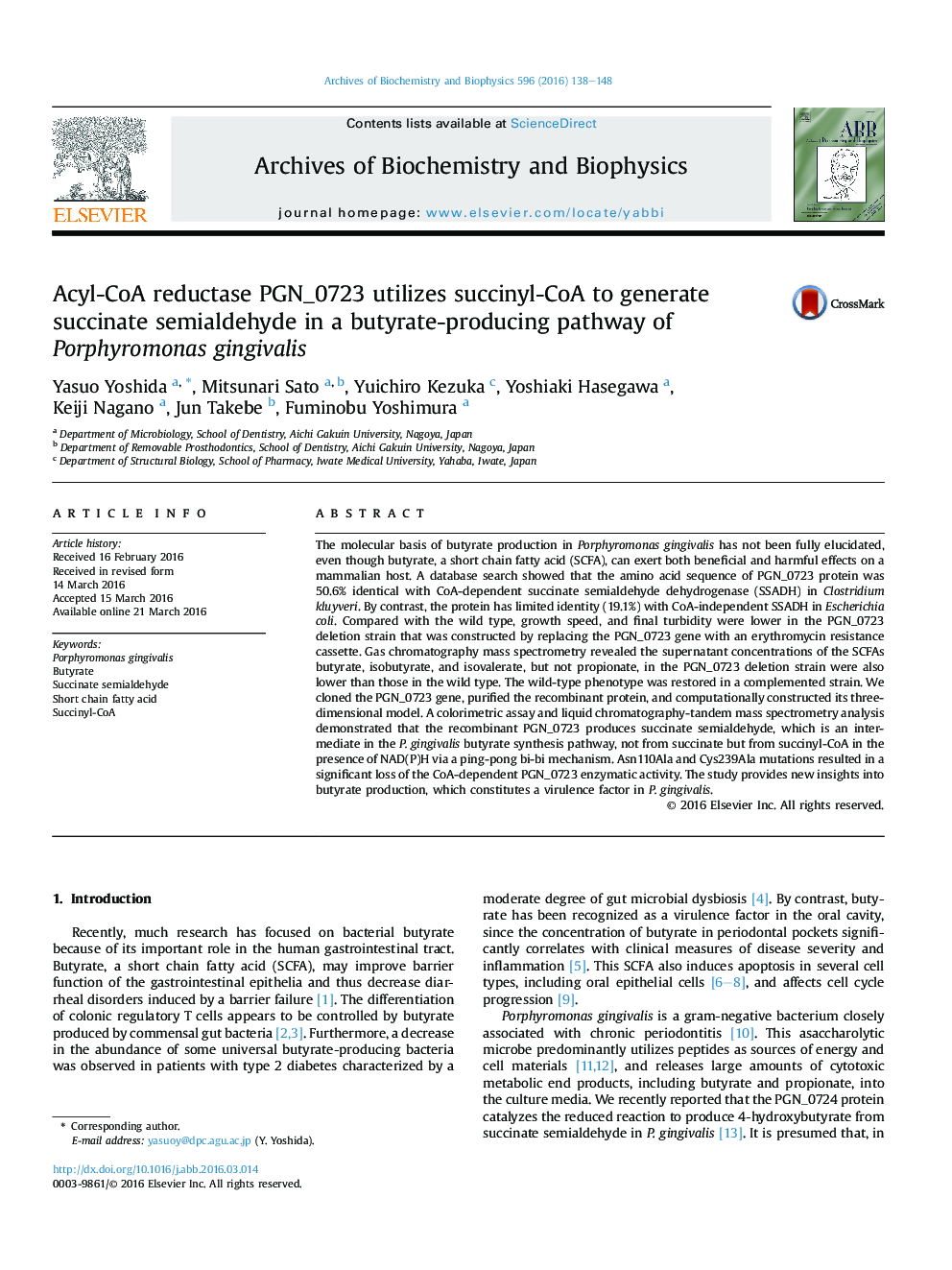| Article ID | Journal | Published Year | Pages | File Type |
|---|---|---|---|---|
| 1924778 | Archives of Biochemistry and Biophysics | 2016 | 11 Pages |
Abstract
The molecular basis of butyrate production in Porphyromonas gingivalis has not been fully elucidated, even though butyrate, a short chain fatty acid (SCFA), can exert both beneficial and harmful effects on a mammalian host. A database search showed that the amino acid sequence of PGN_0723 protein was 50.6% identical with CoA-dependent succinate semialdehyde dehydrogenase (SSADH) in Clostridium kluyveri. By contrast, the protein has limited identity (19.1%) with CoA-independent SSADH in Escherichia coli. Compared with the wild type, growth speed, and final turbidity were lower in the PGN_0723 deletion strain that was constructed by replacing the PGN_0723 gene with an erythromycin resistance cassette. Gas chromatography mass spectrometry revealed the supernatant concentrations of the SCFAs butyrate, isobutyrate, and isovalerate, but not propionate, in the PGN_0723 deletion strain were also lower than those in the wild type. The wild-type phenotype was restored in a complemented strain. We cloned the PGN_0723 gene, purified the recombinant protein, and computationally constructed its three-dimensional model. A colorimetric assay and liquid chromatography-tandem mass spectrometry analysis demonstrated that the recombinant PGN_0723 produces succinate semialdehyde, which is an intermediate in the P. gingivalis butyrate synthesis pathway, not from succinate but from succinyl-CoA in the presence of NAD(P)H via a ping-pong bi-bi mechanism. Asn110Ala and Cys239Ala mutations resulted in a significant loss of the CoA-dependent PGN_0723 enzymatic activity. The study provides new insights into butyrate production, which constitutes a virulence factor in P. gingivalis.
Related Topics
Life Sciences
Biochemistry, Genetics and Molecular Biology
Biochemistry
Authors
Yasuo Yoshida, Mitsunari Sato, Yuichiro Kezuka, Yoshiaki Hasegawa, Keiji Nagano, Jun Takebe, Fuminobu Yoshimura,
